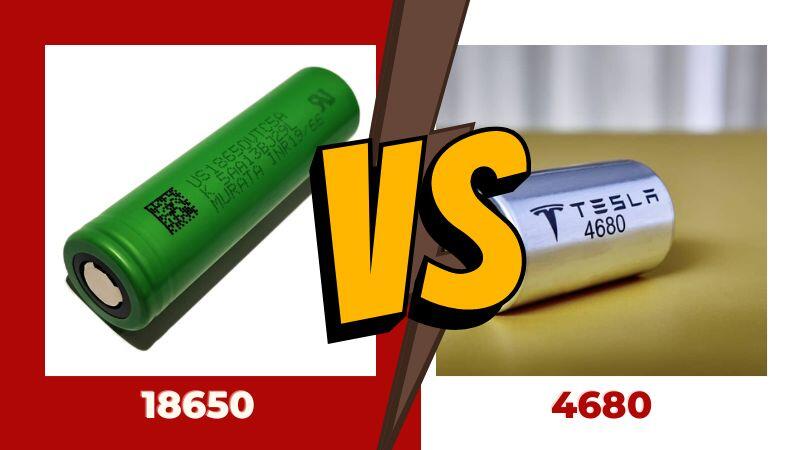Batteries have become an integral part of our daily lives, powering a wide range of devices that we use every day, including smartphones, laptops, and electric vehicles. With the rapid advancements in battery technology, there are now several different types of batteries available in the market, each with its own set of characteristics and advantages. Among them, 18650 and 4680 batteries are two popular options that have gained widespread use in recent years.
These batteries have gained popularity due to their high energy density, long cycle life, and safety features. As a result, they are being used in a wide range of applications, from portable electronics to power storage and electric vehicles. In this article, we will explore the key differences between 18650 and 4680 batteries, and how these differences can impact their performance and suitability for different applications.
Differences Between 18650 and 4680 Batteries
Size and Form Factor
18650 batteries have been around for several years and are commonly used in a variety of applications. They measure 18mm in diameter and 65mm in length, hence the name “18650.” This cylindrical shape makes them easy to manufacture and package, as they fit into a wide range of devices, including flashlights, laptops, and power banks.
On the other hand, the 4680 battery is a newer form factor introduced by Tesla. It is larger than the 18650, measuring 46mm in diameter and 80mm in length. This increase in size provides several advantages, such as higher capacity and power output.
Check also – 18650 vs 20700 Batteries: What are the Differences?
Capacity
Capacity is a critical factor when choosing a battery, as it determines how much energy it can store. 18650 batteries typically have a capacity of between 2000mAh and 3600mAh, with higher-capacity options available at a premium. This capacity is sufficient for most portable devices, such as flashlights and power banks.
In comparison, 4680 batteries have a much higher capacity, ranging from 5000mAh to 6000mAh. This increased capacity makes them ideal for high-power applications, such as electric vehicles, where long-range driving is required.
Power Output
The power output of a battery is another crucial factor to consider, as it determines how much energy the battery can deliver at any given time. 18650 batteries typically have a maximum continuous discharge rate of around 20A, with some high-performance options offering up to 30A.
In contrast, the 4680 battery has a much higher maximum continuous discharge rate, typically around 60A. This increased power output makes them ideal for electric vehicles, where high power is required to accelerate quickly and maintain high speeds.
Thermal Management
As batteries discharge, they generate heat, which can be a problem if not managed properly. 18650 batteries are known to generate a significant amount of heat, which can lead to thermal runaway and, in some cases, fire.
In comparison, the 4680 battery has a larger surface area, which allows for better heat dissipation. This improved thermal management reduces the risk of thermal runaway and makes the battery safer to use.
Cost
Cost is always a consideration when choosing a battery, as prices can vary significantly between different form factors and chemistries. 18650 batteries are relatively inexpensive, with prices ranging from $2 to $10 per cell, depending on the capacity and manufacturer.
In contrast, 4680 batteries are relatively new and are currently only available from a few manufacturers, such as Tesla. As a result, they are more expensive, with prices ranging from $20 to $30 per cell.
Conclusion
Both 18650 and 4680 batteries have their advantages and disadvantages, depending on the application. 18650 batteries are smaller, cheaper, and ideal for portable devices such as flashlights and power banks. 4680 batteries are larger, more expensive, and ideal for high-power applications such as electric vehicles. However, their larger size and improved thermal management also make them safer to use than 18650 batteries. Ultimately, the choice between these two battery types will depend on the specific requirements of the application and the budget available.




